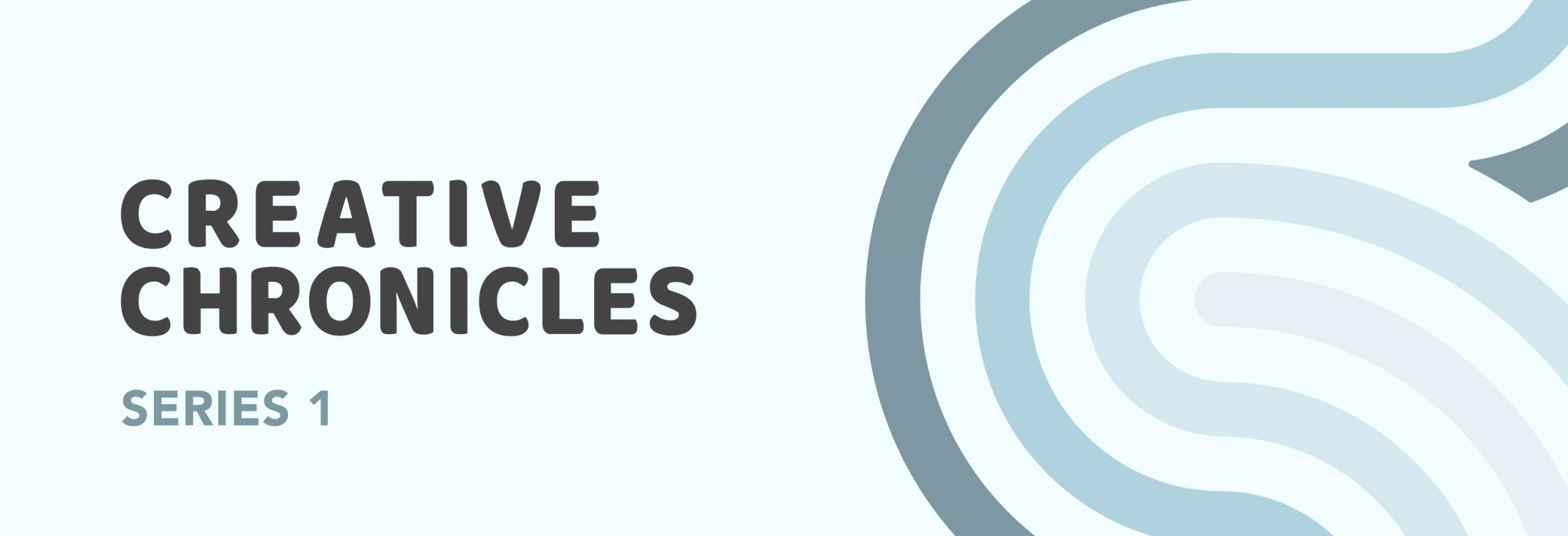Designing Integration: Of Motherhood, Mauritian Culture and Making Change

Creative Chronicles is a series of articles exploring the lives of four Singaporean Creatives. In Series 1, they share about where they are in their creative journey today by choosing a selection of images in response to the prompt, “Because of me, the world…“. The images were then used as conversation starters during our chat with the Creatives.
In this article, we chat with Min Lee, CEO and co-founder of Red Dot. She leads the consultancy in using modern innovation methods to bring rare skills to the Mauritian community, and works with clients across government, corporate and social sectors to design solutions to complex strategic challenges.
Min shares with us how integration is key in her creative journey, as she consciously strives for a life that is more whole. A Singaporean entrepreneur based in Mauritius. A working mother raising her young child and running a consultancy firm. These are but a few significant instances where Min embraces integration.
We present her chosen images and a curation of themes that emerged from our chat. Instead of presenting the conversation chronologically, we delve into each theme through verbatim quotes from various parts of our chat with Min. We hope you find the patterns that have emerged as insightful as we have.
Be present, ask questions, stay curious.
Studio Dojo: What is one significant lesson that you have learned from your daughter?
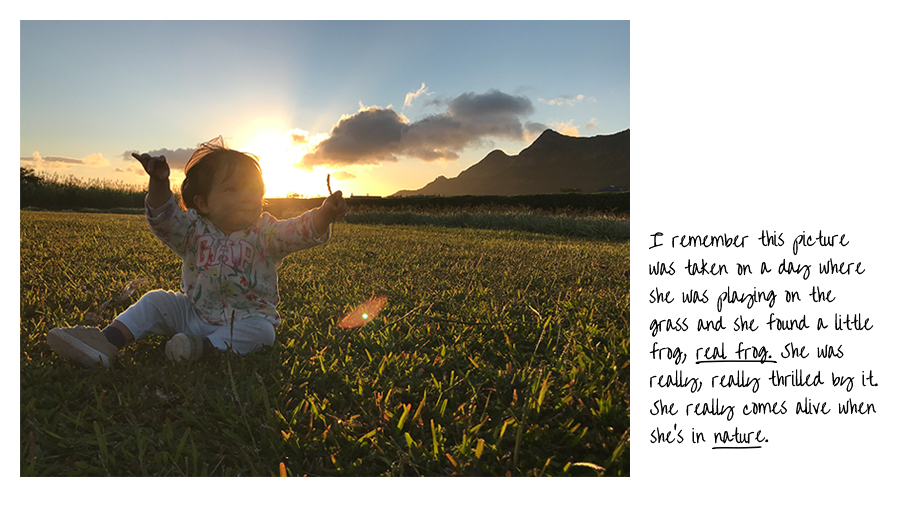
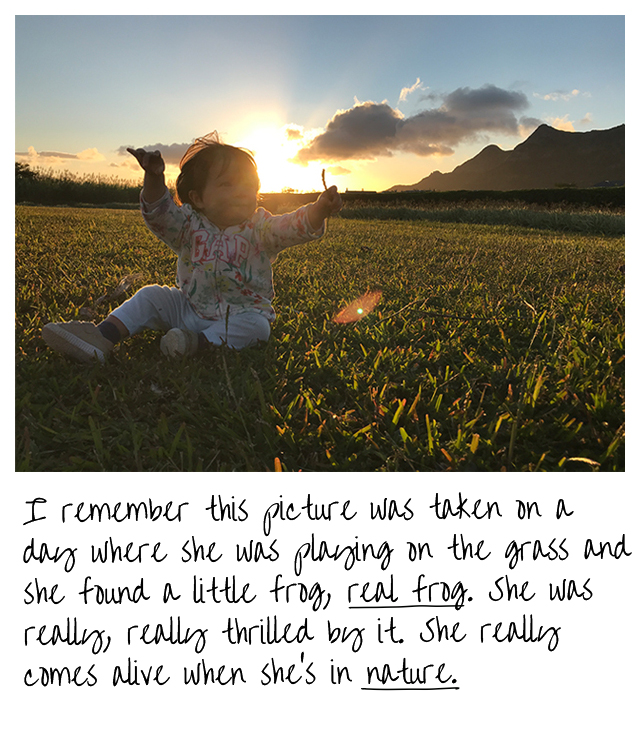
My daughter, Chloe, reminds me to always be present. You know, she’s at an age where she’s exploring her limits so sometimes she acts aggressively. She scratches my neck or she bites when I breastfeed. In those times, I need to remember that there’s nothing intentional behind that. It’s her being present and the next moment she forgets. So, if I harbour that, “Eh, it’s really painful”, it doesn’t make sense.
She doesn’t have the concept of fear. She doesn’t have labels yet. So it’s very interesting seeing the world through her eyes. She reminds me all the time – one, to be present, two, to be curious. Her curiosity is very inspiring as well. I feel that as we grow older, we tend to get less curious and everything is like a blah. Oh, we’ve seen that before. I’ve seen that before. She reminds me to ask new questions and I just love that.
If I think of the prompt “Because of me, the world…”, Chloe is the one thing I can say exists because of me. And my life can be split into before and after I had my daughter. Before I had her, there was this discipline. I wake up, and it’s time for meditation. There’s this schedule and I had a lot of time to myself. Now, Chloe wakes me up. I seldom have time to wake up and sit down for five minutes calmly.
When I wake up, instead of five minutes of meditation, it’s one mindful breath and that’s it, I’m off. When I’m present, the notion of time changes. When I take one mindful breath in the morning, it could be worth an hour. But when I’m not present and I’m in that hurry, one hour could feel like a minute. I’ve also realized that with the time I spent hurrying and trying to pack eight meetings a day, I could probably go a lot further with doing just one impactful thing than the eight meetings that I did. It’s really important to choose what not to do, and I am still learning that every day.
To integrate well, you have to create your own space and practices at work.
Studio Dojo: How have you managed to integrate work and motherhood?
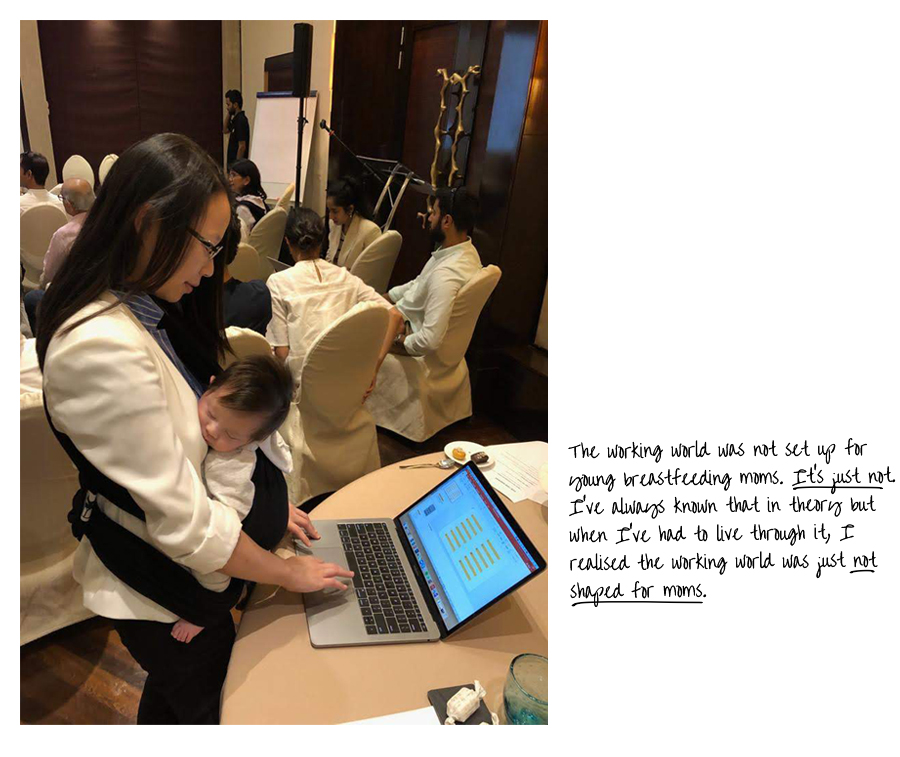
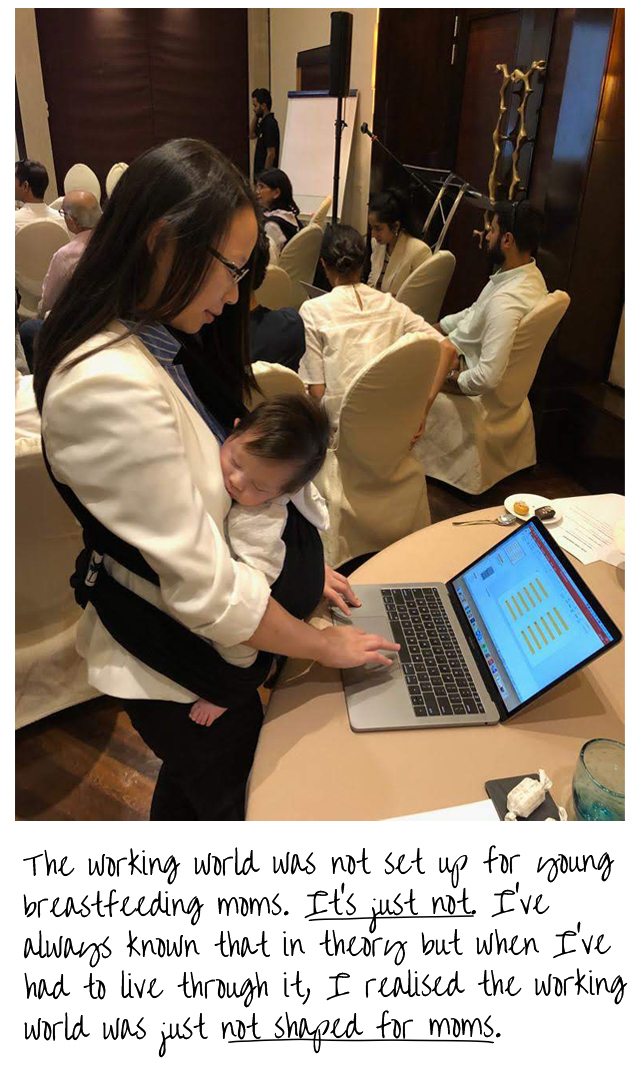
I try and bring Chloe to my work sometimes. That’s an example of integration in my life. Especially when she was younger and I was still breastfeeding, I had to juggle all that with my own work.
On days that I have to facilitate a workshop, that’s six hours of work. I have to get there one or two hours before, and I have to stay after everyone is gone. That’s about nine hours a day and you’re basically needing to breastfeed at least three times a day. Most venues don’t have the necessary amenities. When we go to a client’s site, they don’t really have facilities for you to have the privacy to do what you need to do.
It was a very interesting time to find a way to integrate. How can I be there for my child and still do my best work as a working mom? And I intentionally did some experiments to live that question. That it’s possible. There were times where I was literally pumping in the car because there was nowhere else to go. I had to find the most remote and private parking spot. When they were having a coffee break, I went and breastfed, and then I came back and facilitated.
It was challenging logistically for me to handle, but if you can manage that, it actually sparks a lot of positivity for everyone else. I feel that by bringing her in the room, it also started very meaningful conversations because it can be confronting for people to have a baby in a professional setting. It also depends on the client and their culture, and the response can be very emergent.
Some clients love it, they see a kid and then there’s no more tension in the room. You just cannot be angry around a baby. Just by her being around, it could really change the dynamics of the conversations I was having, and the dynamics of the group. Honestly, it’s mostly positive responses thus far. Sometimes when I have to leave earlier than what was planned on the schedule for motherhood reasons, my co-workers will have to cover for me. So there’s a lot more uncertainty in that way, but they have been very understanding and supportive.
When you embrace the quiet, you become more aware.
Studio Dojo: Have you always known the kind of person who you would like to be?
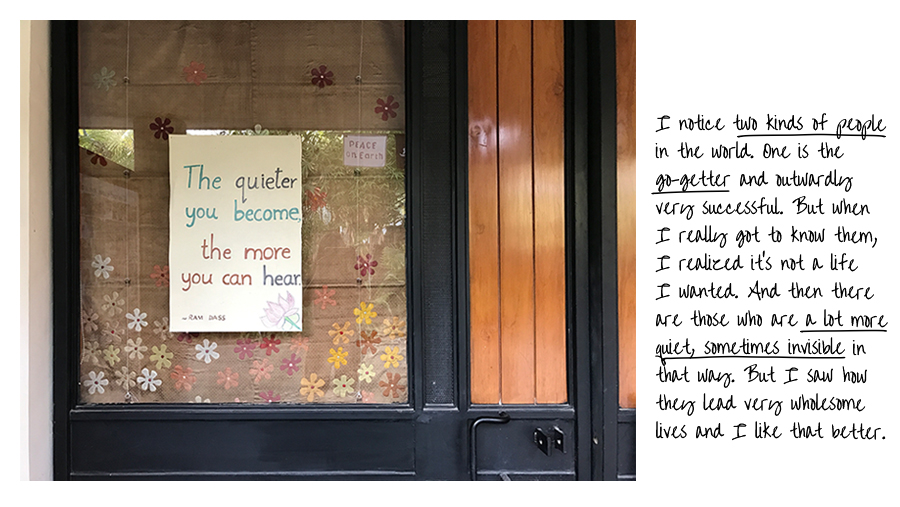
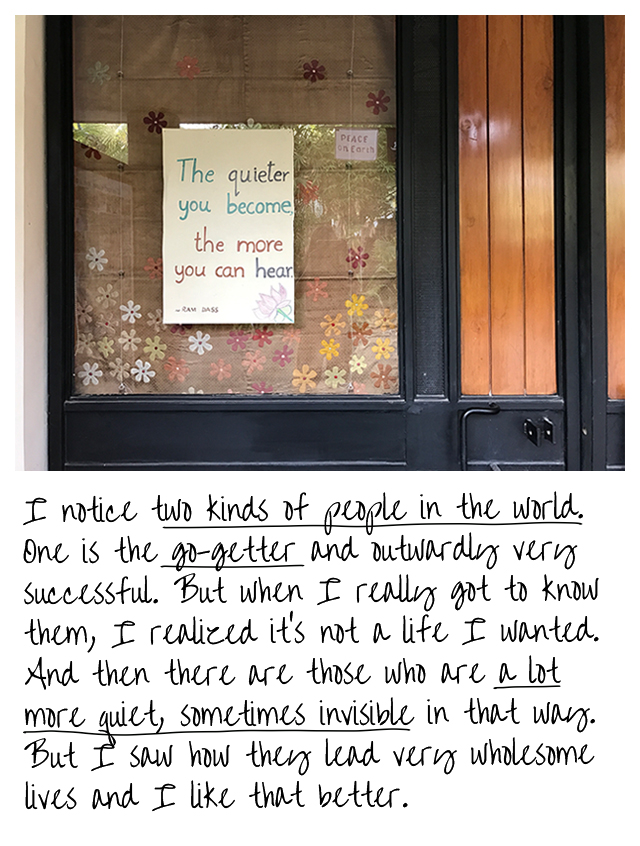
I’ve always grown up in Singapore, and I’ve always been used to a hectic pace of life. I remember that I’ve always jam-packed my day with five to eight meetings, activity after activity. It started in school, then at work, and then later when I was working in high-tech in Silicon Valley, which is just as competitive, right? And, I felt after a while that the busyness didn’t leave a lot of space for integration. When you’re in activity, are you actually reflecting on it? Are you integrating it into your own bodily experience and connecting it to wisdom and what should be the right thing to do? That is often the hard thing to do.
It’s only in the later few years where I found that to be very effective and impactful, I needed a lot of quiet, and it’s as literal as it sounds.
I felt that I was craving for a much slower pace, and a lot more contemplative time, and it so happened that I did a 10-day Vipassana meditation before I moved to Mauritius. That really set off the way I wanted to show up. Which is to say, how do I move with a pace of guidance and not rush through things? When I pause, a space opens up, and there is a lot more choice in that moment. You see a lot more. You start connecting the dots a lot more.
I think that awareness has allowed my work to really be one of integration, which manifests in different ways – how do you build trust? How do you bridge different silos? How do you connect different people and ideas? I know it’s a bit abstract but I feel like that is the foundation of my work today.
When we integrate, we share responsibilities over things that are common to us all.
Studio Dojo: Share with us how your view on integration has helped you make sense of things that are happening around you.
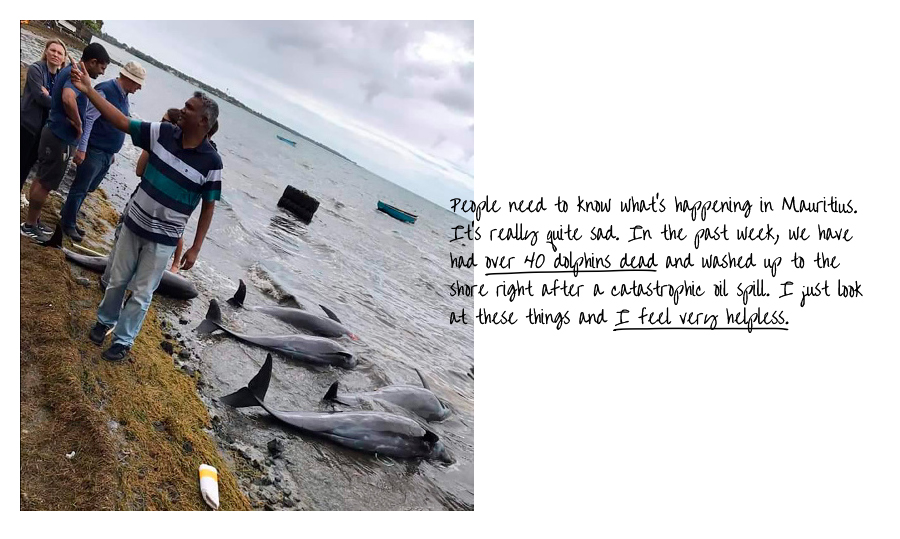
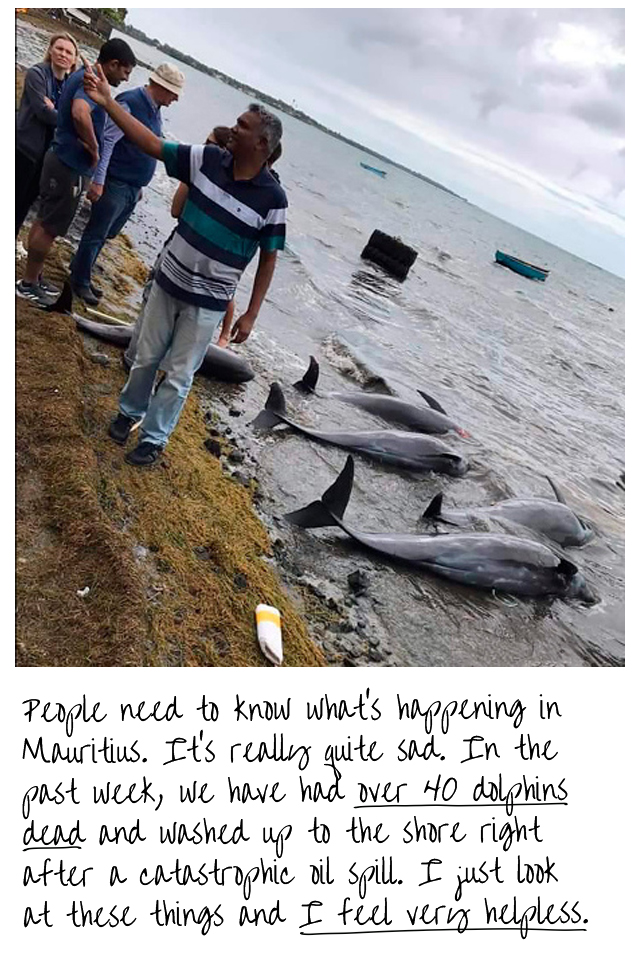
It’s a difficult time for Mauritius because there’s a lot of pain, there’s a lot of anguish. Just in the past week, we had one of the largest peaceful protests in Mauritius of 100,000 people gathering in the Capital. And not only that, Mauritians gathered in embassies all over the world, to protest the government’s mishandling of the oil spill.
And just yesterday another disaster happened. One of the tow boats that was part of the cleanup operation got into an accident. There are two dead and four people missing and because Mauritius is so small, we know one of the families who has been affected. So while all the good work is happening, I think underneath, on the macro level, we just keep getting bombarded with tragedies. At first, I felt anger. After that, a sense of numbing. And then now I ask myself, what can I do?
Because I think everything is circular and integrated, I feel like it’s everybody’s responsibility. It’s how we live, it’s how we consume and it will continue until we change the way we do things. Everyone says they want 2020 to go away and 2021 to be better, but I actually think that what we’re living right now is the new norm, and could get worse if we don’t change our ways. It’s really a wakeup call that there’s always something more that we can all do to reduce our impact on the environment.
Observe, organise, and then, integrate.
Studio Dojo: How did your journey with Red Dot first begin?
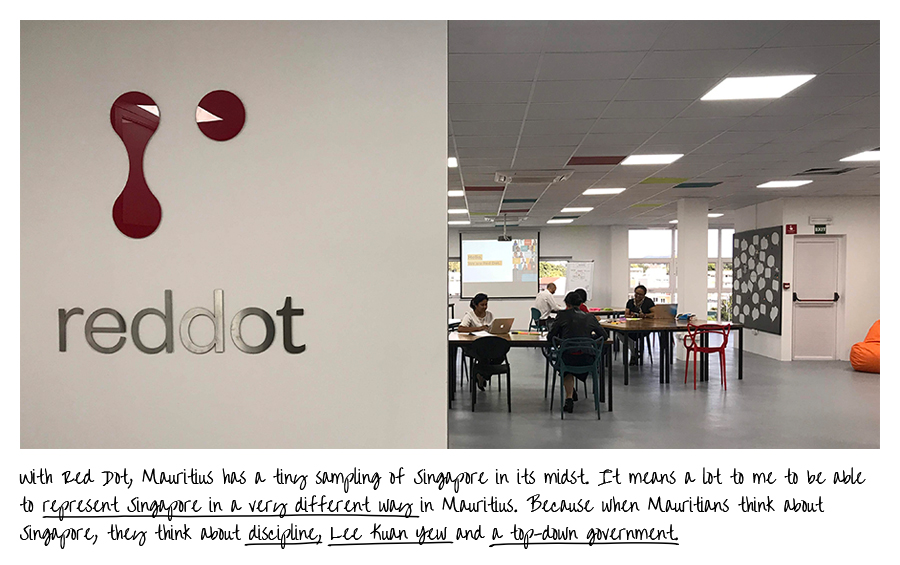
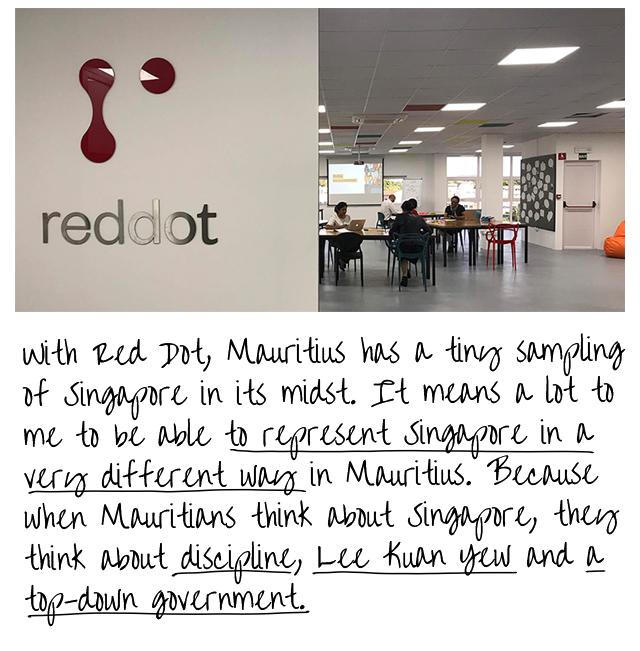
When I was doing the 10 day-meditation, it dawned on me that when I first land in Mauritius, I shouldn’t be trying to solve anything, because I didn’t even understand the place. Before that, I had a lot of dreams: I need to start a new school, I’m going to prototype innovative ways of education, etc. I had all these plans before coming to Mauritius but when I was quiet for 10 days, I realised the first thing I needed to do was to observe. Just observe the place.
My first year in Mauritius was really just observing. Helping out in my father-in-law’s community hospital. I was doing a little bit of social innovation work with the government. Teaching for a bit at the African Leadership University. I was doing a whole bunch of things, just to learn and make sense of what the system is like here. Where are the gaps? What could I do that’s meaningful in this context? Red Dot was born out of that observation.
I realized that what Mauritius really needed was an independent entity that could basically traverse the corporate, government, NGO, and startup world. As Mauritius has large entrenched interests, we need to be independent, to be of true service to the whole system, and not be encumbered by any one agenda. This would allow us to cut across silos, build trust, and bring different parties together, as change ultimately moves at the speed of trust.
Our founding team is driven by an urgent fact that nearly every economic sector in Mauritius is in decline or under threat – how could we seed the next pillars of the economy using innovative thinking and practice, as well as by fostering unconventional partnerships?
That was the spark of it but really, core to our theory of change was that if we want change in the country, we need to find the change-makers. Our first mission was to find ambitious leaders who are serious about change.
I can say that in the last two years, we’ve managed to find a few of these leaders and we’ve been organising projects with them. It was not easy in the beginning, but we are now in a place where we can start choosing our projects, and can also co-invest with our clients to build exciting new ventures. Today we mostly take on projects that have national-level impact.
I also appreciate that Covid has reset our collective notion of what is “essential”. We’re now working on a project to help SMEs grow, and another to improve the quality of life for our elders. It brings a lot of purpose and meaning to be able to work on such projects.
For one to feel integrated, they have to comfortably exist in the same space.
Studio Dojo: How is it like running innovation sprints in Mauritius, compared to Singapore?
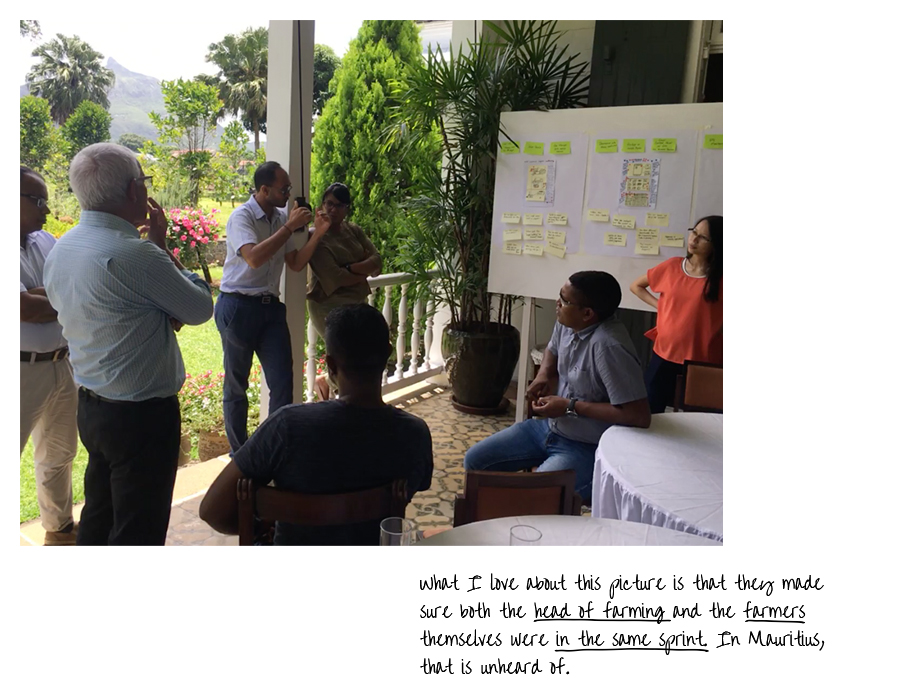
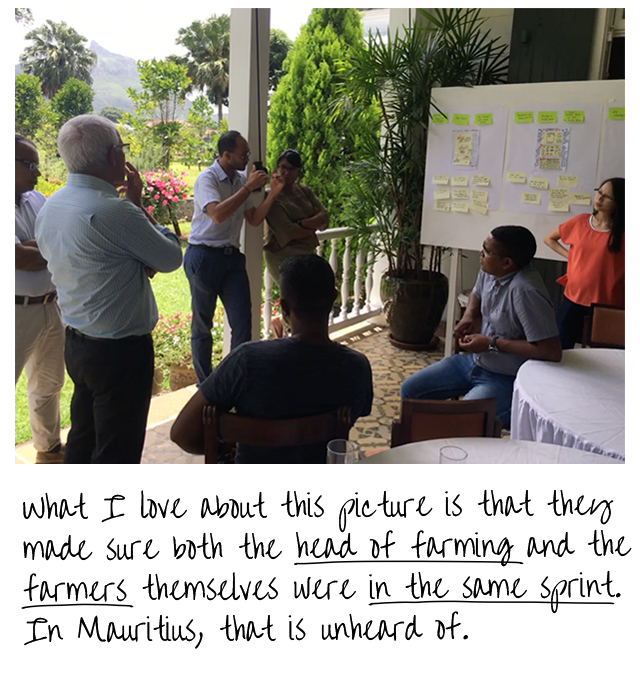
Innovation sprints in Mauritius can be very different from Singapore’s. When we wanted a location, the client had no appropriate venue available. We ended up in the founder’s colonial house! They also didn’t tell us that they didn’t have large whiteboards or flip charts. The farmers actually handmade these boards out of wood and painted them, just so we can all have our sprint.
It really dawned on me how I tend to make so many assumptions! When I came into the room and saw these boards, and they told me that they made it, I was just really moved.
They are one of my favourite clients, Avipro. They are the largest chicken producers in Mauritius and they’re one of our first clients who really had faith to take a bet on us where we were nobody, as a company. We were talking to their next-generation leader, who said “I want to invert the pyramid, I want to empower my farmers to come up with new ideas that could be new businesses of the group”. It’s a very inspiring vision.
In Singapore, it’s more common to have people of different ranks in the same room, but over here, hierarchy is seldom crossed, especially in large organizations. It was the first time that I saw it happening. People came together and you can see in the beginning, people of lower ranks didn’t even dare to talk. By the end, there was a new kind of bond and respect. It’s really empowering to see a group with such a strong people orientation and family culture.
I also remember how I was facilitating the sprint while pregnant. They were my last client of the day. We ended at 6PM and I was delivering the next day at 6am. All of them knew I was delivering the next day and made it a celebration, they even surprised me with flowers after! I’m filled with a lot of gratitude for the way they’ve made me feel like family. That feeling with a customer is very rare.
My husband and I try to support businesses that we know. So now, every time I buy our chicken, I buy Avipro’s. And when I eat that chicken, I can visualize every person it took to make the chicken from the hatchery to the broiler, the whole processing line. To actually see everybody down that chain and all that goes into making a piece of chicken, I feel moved by that.
Catch up on Min’s articles

